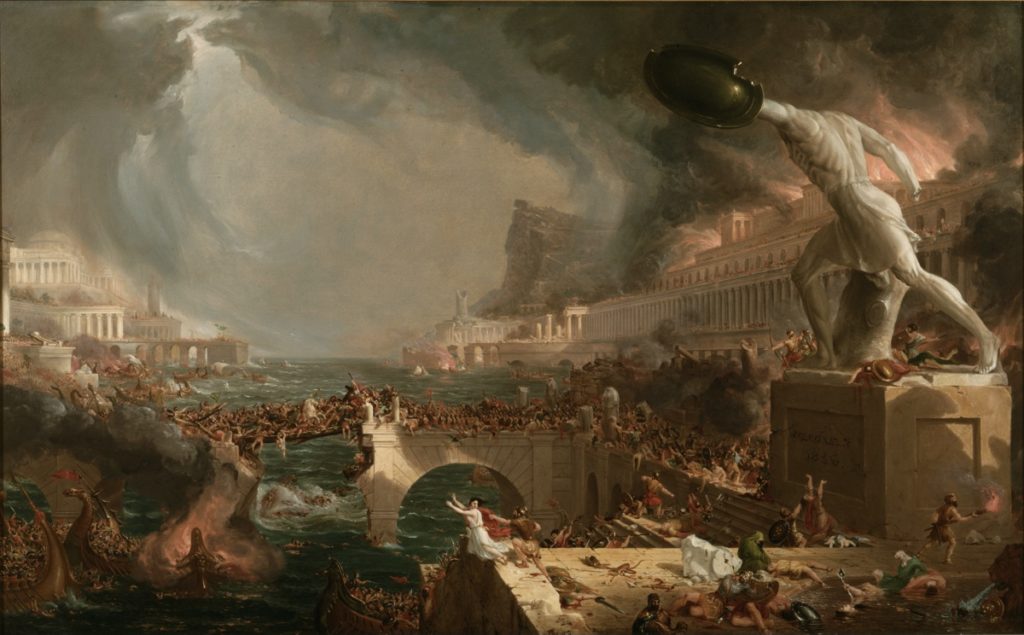Last updated on January 29th, 2023 at 08:44 pm
While many people alive today will say that 2020 is the worst year they have ever seen, many precede it on the list of horrific times in human history.
In 2020, the world watched in horror as millions of people died from the coronavirus pandemic, whole countries shut down, and nobody knew what to do as they worried for their loved ones and general welfare. If that wasn’t the worst year for humanity, then what was?
Generally, most of humanity’s troubled times happened in precise locations. Your life could have been dramatically impacted or carried on without concern depending on where you lived.
Historians sometimes disagree about which year was the worst in history. Still, new evidence suggests that it may have been the year 536 A.D. Something that appears to have impacted half of the global population.
Let’s look at some of the years that left their mark on history before we look at the worst year documented.

Plagues and Disease
In 1347, the Black Plague arrived on twelve ships at a port in Messina, Italy. The people near the docks at the time were shocked by what they saw. The sailors succumbed to a disease that caused black boils to appear on their bodies. The Italian authorities tried to get the ships out of the harbor as quickly as possible. However, the Bubonic Plague had already started to spread.
Rats and fleas infected with the Bubonic Plague would cause unprecedented destruction to one continent. Unfortunately, the people in Europe weren’t sure what caused the plague, and panic spread quickly.
Records indicate that healthy people would go to bed at night, and loved ones would find them dead in the morning.
Ultimately, over 20 million people would succumb to this disease, knocking out about half of Europe’s population before the pandemic ended.
In 1918, the Spanish Flu made it’s way worldwide, and nobody knows where it started. This Flu started with mild symptoms, such as chills and fever.
However, within a few months, a new strain of infection caused people’s lungs to fill with fluids, suffocating over 50 million people across the planet. This Flu largely impacted countries in the Northern Hemisphere before it traveled around the rest of the globe.
Natural Disasters
In 1815, Mount Tambora, a supervolcano in Indonesia, erupted. This eruption was the cause of climate change for at least three years afterward due to the gases trapped in the stratosphere. The ash from the volcano spread across the sky, giving the following year the nickname “the year without summer.”
There were such extreme natural disasters that occurred during this time, such as flooding, drought, and wildfires, that people thought it was the end of the world.
This eruption caused a significant chain of events that made this the start of one of the worst historical periods. Without sunlight, rampant crop failure across the Northern Hemisphere led to mass starvation.
Historians believe this eruption caused the death of somewhere between 100,000 and millions of people because climate change allowed a cholera pandemic to infect the people already weakened from starvation.
Human Terrorists
Some people believe that 1939 was the worst year in the history of humans, the middle of the Holocaust and World War II. Adolf Hitler, successfully convinced his followers that the European Jews needed to be removed from society and that they were the cause of so many terrible things.
This belief caused several large concentration camps, where so many innocent Jewish people were sent to be tortured and killed, to erupt near railways.
Germany and its leaders systematically eradicated approximately 6 million Jewish people and caused the beginning of the second world war. While some countries supported Germany, Great Britain, and France were among the first to declare war over an invasion of Poland.
This war impacted over 50 nations across the planet and resulted in the death of about 50 million people. Nuclear bombs were also deployed for the first time in history, causing excessive devastation to soldiers and civilian populations.
536: The Worst Year in History
Historian Michael McCormick of Harvard University has been researching what happened back in 536. Some records from historians and politicians spoke of the sun being absent, saying that they no longer had shadows during the middle of the day and of a mysterious fog that descended upon Europe, the Middle East, and Asia. But, without detailed records to tell us exactly what happened, historians like McCormick have been looking for natural indications to tell us further details.
New evidence from glaciers and tree rings indicates a massive volcanic eruption occurred in Iceland. McCormick proved that volcanic ash had covered the sky by using a unique technique to test the ice on glaciers in Greenland, Iceland, and the Swiss Alps.
There also is evidence of two more supervolcanoes erupting in 540 and 547. As with the Mount Tambora eruption, this caused problems for many people.
The mysterious fog that history tells us about was volcanic ash that blocked the sun from the sky for a year and a half. This time became known as the Late Antique Little Ice Age and is described as a “volcanic winter.”
The eruption caused the climate to change dramatically, causing crops to fail, snow to fall in summer, and temperatures to make it the coldest decade in over 2,000 years.
As if this isn’t horrifying enough, the first bubonic plague immediately hit the world. Millions of people were weakened by the widespread famine and disease that ravaged the population,. Some historians believe that volcanoes in North America erupted at the same time.
Other historians believe that these events decimated half the world’s population. While humanity has felt terror over the years, nothing compares to the Icelandic eruption of 536.

